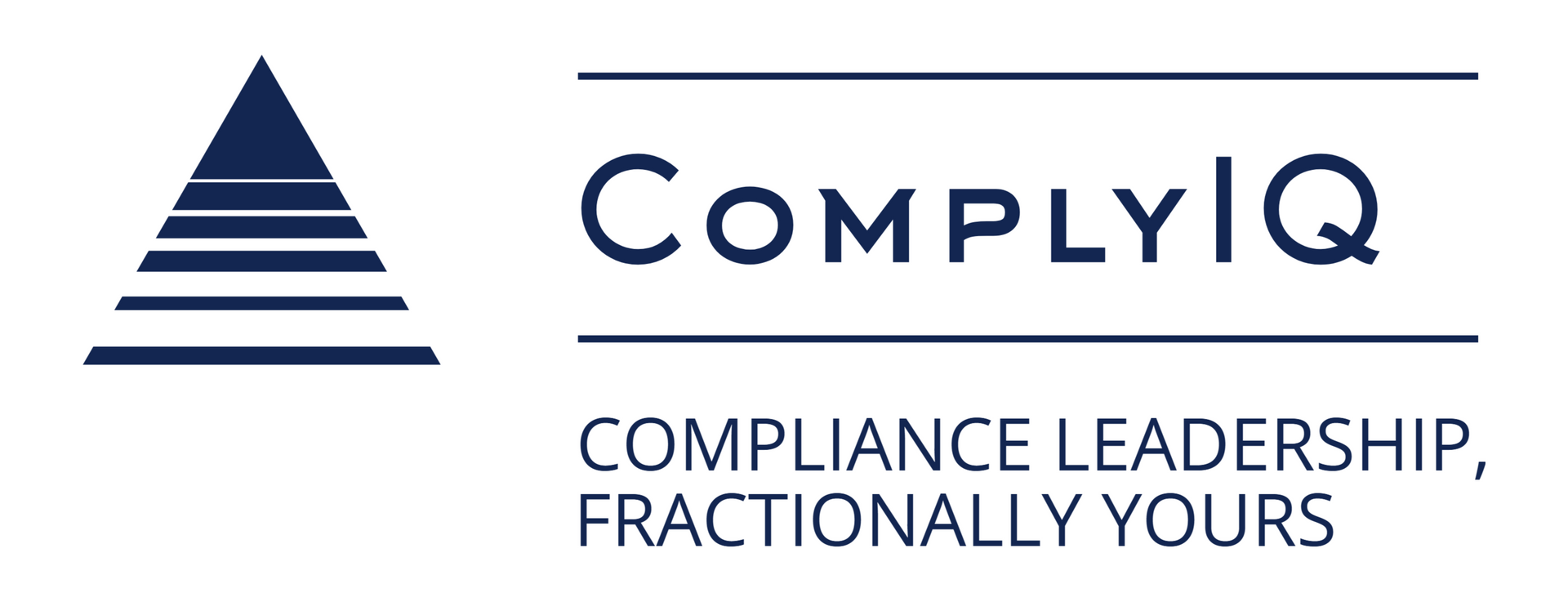AI in Compliance: From Hype to Governance
AI in Compliance: From Hype to Governance is a practical guide for fintech leaders to build AI oversight, vendor due diligence, and human-AI controls that satisfy examiners.

Introduction
AI won't replace compliance teams.
This dangerous myth has cost organizations millions in failed implementations. Companies believe AI will automate their entire compliance department overnight, transforming fintech operations like some kind of regulatory fairy tale.
Here's what actually happens: AI tools create more problems than they solve without proper oversight.
They generate false positives that waste hours of review time. They miss important risks that slip through automated filters. They create regulatory blind spots that get you in serious trouble with examiners.
The worst part? Most companies don't realize these problems until it's too late.
This guide shows you how to move beyond vendor hype toward real AI governance that actually works.
Understanding AI's Real Position in Compliance Today
The fintech sector has witnessed massive AI tool adoption over the past three years. Treasury's recent analysis shows significant AI investment across financial services. But here's the problem: adoption rates don't match success metrics.
The numbers tell a troubling story.
While 73% of financial institutions invested in AI compliance solutions, only 28% achieved their expected ROI within two years. That means roughly 7 out of 10 companies are sitting on expensive AI tools that aren't delivering promised results.
Why the disconnect? Organizations rush into AI without planning.
The Current AI Landscape in Financial Compliance
AI deployment currently focuses on three main areas: transaction monitoring, regulatory reporting, and risk assessment. Transaction monitoring tools promise 80% false positive reductions. Reporting automation claims 60% cost cuts. Risk platforms tout real-time threat detection.
Yet successful implementations remain surprisingly rare.
Here's a real example: A mid-sized payments company invested $2.3 million in an AI monitoring system. The result? 40% more false positives than their old rule-based system. They spent six months manually tuning the tool, paid extra consulting fees, and got marginal improvements at best.
The compliance team was drowning in alerts. Customer onboarding slowed to a crawl. Management lost confidence in the entire initiative.
Now contrast that with a success story. A regional fintech took a different approach entirely. They started small with specific transaction types. They established clear governance from day one. They kept humans in the loop throughout the process.
The result? A 45% reduction in compliance review time within eight months.
What made the difference? Governance structure and realistic expectations from the start.
Why Some Companies Succeed While Others Fail
The pattern becomes clear when you look at multiple implementations. Companies treating AI as some kind of compliance miracle consistently fail. Those approaching it as a sophisticated tool requiring smart oversight succeed.
The successful companies share common characteristics. They have dedicated AI governance committees. They maintain detailed vendor evaluation processes. They invest in staff training before deployment. They set realistic timelines extending beyond vendor promises.
Failed implementations also follow predictable patterns. They skip governance planning. They delegate technical decisions to non-compliance staff. They expect immediate results without proper change management. They underestimate integration complexity.
Most importantly, successful companies recognize that AI amplifies existing compliance capabilities rather than replacing human judgment entirely.
Why Most AI Compliance Initiatives Fall Short
Building Without a Plan Leads to Disaster
Here's what typically happens: Organizations pick tools first, strategy later. This backwards approach creates operational chaos and compliance gaps that compound over time.
We've seen this failure pattern repeatedly across different company sizes and verticals. A lending platform deployed an AI credit engine without mapping it to ECOA requirements. The system made accurate credit assessments but couldn't generate the specific explanations the CFPB requires for AI-driven credit decisions.
The cost? $1.8 million in remediation efforts plus six months of delayed product launches.
Strategy-first approaches work completely differently. Smart organizations define specific outcomes before evaluating tools. They align AI capabilities with existing regulations. They create measurable success metrics beyond vendor promises.
They also plan for failure scenarios. What happens if the AI system goes down? How do you maintain compliance during system maintenance? Who makes decisions when AI confidence levels drop below acceptable thresholds?
Reactive AI implementation creates compounding problems that get worse over time. You'll face integration nightmares that delay other projects. Staff resistance that undermines adoption. Regulatory gaps that become apparent only during examinations.
Missing Leadership Creates Dangerous Blind Spots
Here's the biggest problem I see across the industry: Organizations delegate AI implementation to IT departments without involving senior compliance leadership throughout the process.
This creates dangerous blind spots that regulators will absolutely find during examinations.
IT teams understand technical capabilities but lack regulatory context for compliance-specific implementations. They focus on system performance metrics rather than regulatory alignment requirements. They prioritize uptime and speed over audit trail completeness and explainability requirements.
Many growing fintechs can't afford a full-time Chief Compliance Officer but desperately need that expertise for AI governance decisions. That's exactly why I created ComplyIQ's fractional CCO services - to give companies Fortune 500-caliber compliance expertise without the full-time overhead that strains startup budgets.
The regulatory risks are becoming more concrete every quarter. NYDFS requires board-level AI oversight, including comprehensive vendor risk management and detailed data governance protocols.
Consider these telling statistics: 67% of AI compliance failures link directly to insufficient executive involvement during planning phases. Organizations with dedicated AI governance committees report 3x higher success rates compared to those delegating decisions to technical teams.
The expertise needed goes much deeper than most organizations realize. You need someone who can evaluate vendor claims against regulatory requirements. Someone who understands both technical capabilities and compliance obligations. Someone who can ensure ongoing regulatory alignment as both technology and regulations evolve.
Most organizations simply lack this specialized skill set internally, especially at the executive level where strategic decisions get made.
The Hidden Costs Nobody Talks About
Vendors rarely discuss the total cost of AI implementation during sales processes. Beyond licensing fees, you'll encounter integration costs, staff training expenses, ongoing maintenance requirements, and compliance documentation obligations.
Integration typically costs 2-3x the initial licensing fee for complex compliance systems. Staff training requires 3-6 months for competency development. Ongoing vendor management demands dedicated resources for performance monitoring, contract negotiations, and regulatory alignment reviews.
Then there are the opportunity costs. Failed AI implementations consume management attention, delay other compliance initiatives, and create staff burnout that affects retention rates.
Building an AI Governance Structure That Works
Step 1: Define What Success Actually Looks Like
Forget generic efficiency improvements that sound good in board presentations. Define specific compliance outcomes your AI should achieve, with measurable criteria you can track over time.
Smart organizations create detailed mapping documents linking AI capabilities to existing regulatory requirements. Every tool must serve a documented compliance purpose with clear performance thresholds.
Use established guidance like the NIST AI Risk Management system for structured risk identification and management throughout implementation phases. This framework provides practical checklists for governance structure development.
Create your own success metrics rather than accepting vendor benchmarks. Don't accept generic "efficiency improvements" as success criteria. Instead, measure actual compliance review time reductions, examiner feedback score improvements, and regulatory alignment ratings based on your specific regulatory environment.
Document exactly how AI fits your broader compliance strategy. Create detailed integration roadmaps specifying which functions get AI assistance, which require human oversight, and where traditional approaches continue working better.
Consider both quantitative and qualitative success measures. Quantitative metrics might include false positive reduction percentages, review time improvements, and cost savings. Qualitative measures could include staff satisfaction, examiner feedback, and regulatory relationship quality.
Step 2: Evaluate Vendors Like Your License Depends on It
Because it probably does. Develop specific criteria for AI vendor evaluation that goes far beyond marketing presentations and demo scenarios.
The NIST AI RMF Playbook offers practical checklists you can adapt for comprehensive due diligence processes. Use these frameworks to structure vendor evaluations systematically.
Create AI-specific due diligence checklists covering data sources, model lifecycle management, security protocols, and explainability capabilities. Require detailed documentation about training data sources, validation procedures, and ongoing monitoring capabilities.
Ask pointed questions about model development. What data was used for training? How often are models retrained? What bias detection procedures are implemented? How are model performance changes detected and addressed?
Establish ongoing performance monitoring requirements that extend well beyond initial implementation periods. Regular reviews should include accuracy metrics, bias detection results, regulatory alignment assessments, and competitive benchmarking studies.
Define clear exit strategies before signing any contracts. Specify performance thresholds that trigger contract review, data extraction procedures for system migration, and alternative pathways to avoid costly vendor lock-in situations.
Pay special attention to vendor stability and regulatory experience. How long has the vendor been operating? What regulatory examinations have they supported? Can they provide references from similar organizations in your regulatory environment?
Step 3: Design Human-AI Collaboration That Makes Sense
The most successful AI implementations create clear boundaries between automated processing and human decision-making based on regulatory requirements and organizational risk tolerance.
Determine the right balance through careful analysis of regulatory obligations, liability considerations, and practical workflow requirements. High-risk decisions like credit denials, sanctions screening hits, or suspicious activity reporting need human review regardless of AI confidence levels. No exceptions, ever.
Create detailed escalation procedures for AI-flagged issues. Specify which staff members handle different escalation categories, establish clear timeframes for human review, and document decision-making authority at each escalation level.
Train your compliance staff extensively on both AI tool capabilities and limitations. Team members must understand how to interpret AI outputs, when to override system recommendations, and how to document decisions for regulatory examination purposes.
This training goes beyond basic system operation. Staff need to understand underlying AI methodologies, common failure modes, and regulatory implications of AI-driven decisions. They need confidence to challenge AI recommendations when human judgment suggests different approaches.
Assign specific individuals clear responsibility for each AI system's outputs. Regulatory examiners need to identify responsible parties during audit processes, and accountability structures must support this requirement.
Consider creating AI oversight roles within your compliance team. These individuals focus specifically on AI system performance, vendor relationships, and regulatory alignment monitoring.
Step 4: Build Regulatory Alignment Into Every Decision
Map AI capabilities to specific regulatory requirements using detailed compliance matrices. Identify which regulations apply to each AI use case and specify documentation requirements for examination purposes.
This mapping process requires deep regulatory knowledge and ongoing maintenance as both AI capabilities and regulatory guidance evolve. The complexity explains why many organizations benefit from fractional compliance officer expertise during AI implementation phases.
Create comprehensive documentation standards that satisfy examiner expectations across multiple regulatory bodies. Include detailed model cards, complete decision audit trails, and regular bias testing results demonstrating ongoing compliance monitoring.
Establish complete audit trails for all AI-driven activities. Capture input data, processing steps, human interventions, and final decisions in formats examiners can easily access and understand during routine examinations.
Develop proactive regulatory communication strategies that address examiner concerns before they arise. Prepare executive summaries of governance structures, performance metrics, and risk mitigation procedures for examination presentations.
Consider regulatory implications of AI system changes. Updates, retraining, and configuration modifications may require examination notification or approval processes depending on your regulatory environment and AI system importance.
AI Implementation Pitfalls and How to Avoid Them
The "Black Box" Problem Kills Regulatory Approval
Regulators increasingly demand explainable AI decisions, especially for credit underwriting, sanctions screening, and suspicious activity detection. The AI Fairness 360 toolkit provides open-source methods for measuring fairness and implementing bias detection across different AI applications.
Many AI systems excel at pattern recognition but struggle with explanation generation. This creates serious regulatory compliance problems when examiners expect detailed justification for automated decisions affecting consumers or regulatory reporting.
Plan for explainability requirements from the beginning rather than retrofitting explanation capabilities. Some AI approaches inherently provide better explainability than others, and this should factor heavily into vendor selection decisions.
Poor Data Quality Undermines Everything
Bad data creates model drift, generates excessive false positives, and reduces system accuracy over time. You need comprehensive data governance protocols including regular quality assessments, source validation procedures, and ongoing pipeline monitoring capabilities.
Data problems compound quickly in AI systems. A small data quality issue can cascade through processing pipelines, creating systematic errors that become apparent only during performance reviews or regulatory examinations.
Establish data quality monitoring from day one. Create automated checks for data completeness, accuracy, and consistency. Implement regular data source validation procedures and maintain detailed documentation for examination purposes.
Integration Nightmares Derail Even Well-Planned Projects
Legacy system integration creates technical bottlenecks that vendors rarely address adequately during sales processes. Plan for detailed technical assessments, custom API development requirements, and phased rollout strategies that maintain business continuity throughout implementation.
Most compliance systems integrate with multiple data sources, reporting platforms, and workflow tools. AI implementations must work within these existing architectures without disrupting critical compliance operations.
Budget significant time and resources for integration work. Complex compliance environments often require 6-12 months for full AI system integration, regardless of vendor timeline promises.
Staff Resistance Kills Adoption Even When Technology Works
Compliance teams often view AI as job threats rather than productivity enhancement tools. Address this perception through transparent communication, comprehensive training programs, and clear career development paths that incorporate AI collaboration skills.
Involve staff in vendor evaluation and implementation planning. When team members understand AI limitations and participate in governance structure development, they become advocates rather than obstacles.
Create new role definitions that emphasize human judgment enhanced by AI capabilities. Help staff understand how AI changes their work rather than replacing their expertise.
Vendor Lock-In Creates Strategic Vulnerabilities
Treasury's cybersecurity analysis highlights supply chain risks and recommends diversification strategies for critical AI systems supporting compliance operations.
Avoid single-vendor dependencies for critical compliance functions. Maintain alternative processing capabilities and plan migration strategies from the beginning of vendor relationships.
Negotiate contract terms that support flexibility as your needs evolve and competitive alternatives emerge. AI technology evolves rapidly, and long-term vendor commitments may limit adaptation capabilities.
Experienced fractional compliance leadership proves invaluable for navigating these complex implementation challenges cost-effectively. Senior compliance officers bring regulatory expertise to evaluate vendor claims, technical knowledge for implementation oversight, and strategic perspective for long-term organizational success.
Regulatory Considerations You Can't Ignore
Current Guidance Landscape
Regulatory guidance varies significantly across jurisdictions and oversight bodies, creating complex compliance requirements for multi-state operations. The OCC's model risk management guidance establishes foundational oversight requirements that apply directly to AI implementations in banking contexts.
This guidance predates current AI capabilities but establishes important principles for model validation, ongoing monitoring, and governance structure requirements that regulators expect organizations to apply to AI systems.
Requirements for AI transparency continue evolving rapidly across different regulatory bodies. Treasury's comprehensive analysis of AI in financial services identifies significant gaps in current regulatory frameworks and signals forthcoming guidance development across multiple agencies.
Documentation Requirements Exceed Traditional Standards
Documentation requirements for AI-driven processes significantly exceed traditional compliance expectations. Regulators expect detailed records of model development, comprehensive validation testing results, ongoing monitoring procedures, and human oversight activity documentation.
This documentation serves multiple purposes during regulatory examinations. Examiners use it to understand AI system capabilities, assess risk management adequacy, and evaluate compliance with applicable regulations.
Create documentation standards that address examiner needs proactively. Include technical specifications, governance procedures, performance monitoring results, and incident response protocols in accessible formats.
Cross-Jurisdictional Complications
Cross-jurisdictional considerations significantly complicate AI deployments for organizations operating across multiple states or regulatory environments. State-level guidance like NYDFS requirements creates additional obligations that federal oversight frameworks may not fully address.
Different states may have conflicting requirements for AI governance, documentation, or disclosure obligations. Organizations must navigate these differences while maintaining consistent compliance standards across all operating jurisdictions.
Consider creating jurisdiction-specific compliance matrices that map AI capabilities to applicable state and federal requirements. This analysis helps identify potential conflicts and ensures comprehensive compliance coverage.
Emerging Regulatory Expectations
Regulatory expectations from CFPB, OCC, state banking departments, and other oversight bodies continue developing through examination processes, enforcement actions, and industry guidance publications. Monitor regulatory communications closely and participate in industry forums to stay current with evolving requirements.
Many regulatory bodies are developing AI-specific examination procedures and compliance expectations. Early engagement with regulatory authorities can provide valuable guidance for governance structure development and implementation planning.
Consider participating in regulatory sandboxes or pilot programs where available. These programs provide opportunities to test AI implementations under regulatory supervision while contributing to regulatory policy development.
Implementation Strategies for Long-Term Success
Creating Scalable Governance Frameworks
Successful AI governance scales with organizational growth and regulatory complexity. Design governance structures that accommodate multiple AI systems, diverse regulatory requirements, and evolving organizational needs over time.
Consider creating tiered governance approaches that match oversight intensity to AI system risk and importance. High-risk systems supporting critical compliance functions need more intensive oversight than lower-risk applications supporting operational efficiency.
Establish clear governance roles and responsibilities that survive personnel changes and organizational restructuring. Document decision-making authority, escalation procedures, and accountability structures in detail.
Building Competitive Advantages Through Smart AI Use
Organizations implementing AI governance effectively create sustainable competitive advantages through improved efficiency, better risk management, and enhanced regulatory relationships.
Smart AI implementations free human resources for higher-value activities like strategic analysis, relationship management, and complex problem-solving that AI cannot effectively automate.
Consider how AI capabilities support broader business objectives beyond compliance efficiency. Can AI insights improve product development? Do AI capabilities enable new market expansion opportunities? How do AI implementations affect customer experience and satisfaction?
Preparing for Regulatory Evolution
Regulatory frameworks for AI in financial services will continue evolving rapidly over the next several years. Organizations with flexible governance structures and comprehensive documentation will adapt more easily to changing requirements.
Build governance frameworks that accommodate regulatory changes without requiring complete system overhauls. Maintain detailed documentation that supports various compliance requirements and examination approaches.
Consider regulatory trends in AI oversight and plan implementations that align with likely future requirements. Proactive compliance positioning reduces adaptation costs and regulatory risk as guidance evolves.
Conclusion
Moving from AI hype to practical governance requires experienced leadership and disciplined execution across every implementation phase.
Organizations succeeding with AI compliance tools consistently prioritize governance planning over flashy technological features. They maintain realistic expectations about implementation timelines and invest in comprehensive oversight structures from project initiation.
Here's the bottom line: You need strategic compliance leadership for AI governance initiatives. Most growing fintechs can't afford full-time senior compliance expertise, but they desperately need it for AI implementation success. Our fractional CCO services provide exactly this capability - executive-level guidance to evaluate AI tools systematically, establish proper oversight structures, and ensure ongoing regulatory alignment without the financial burden of full-time executive hiring.
Don't rush into vendor relationships without adequate preparation and governance planning. The investment in proper strategic planning, comprehensive oversight structures, and thorough staff training delivers superior long-term results compared to the costly implementation failures plaguing most AI compliance initiatives across the financial services industry.
The organizations getting AI right today will have significant competitive advantages tomorrow. But only if they build governance foundations that support sustainable success rather than chasing the latest technological trends without proper strategic consideration.
Frequently Asked Questions
How do I know if my organization is ready for AI compliance tools? You're ready when you have established compliance processes, dedicated qualified staff, clear data governance protocols, and executive support for proper oversight implementation. If you're still building basic compliance programs or lack dedicated compliance personnel, focus on operational foundations before adding AI complexity to existing challenges.
What are the most important governance elements for AI implementation success? Executive oversight with clear accountability, comprehensive vendor risk assessment protocols, well-defined human-AI collaboration models, and detailed regulatory alignment documentation form the foundation. Missing any of these elements significantly increases implementation failure risk and regulatory examination problems.
How can smaller fintechs afford proper AI governance oversight without breaking budgets? Fractional compliance officer services provide cost-effective access to senior expertise without full-time executive hiring costs that strain startup budgets. Fintech Sandbox resources also offer valuable community support and technical guidance for organizations with limited resources.
What regulatory risks should I consider before deploying AI in compliance operations? Key risks include explainability requirements for adverse consumer decisions, comprehensive documentation obligations for regulatory examination purposes, bias detection and mitigation requirements, and ongoing monitoring obligations throughout the AI system operational lifecycle. Each regulatory body may have different specific requirements.
How do I measure the ROI of AI compliance investments accurately? Establish detailed baseline metrics for compliance review time, false positive rates, staff productivity, and examination feedback before implementation begins. Measure improvements over 12-18 month periods rather than expecting immediate results, and include all implementation costs, training time, ongoing vendor fees, and integration expenses in comprehensive ROI calculations.
What should I look for when evaluating AI compliance vendors? Evaluate explainability capabilities thoroughly, assess data governance protocols comprehensively, review model validation procedures in detail, examine regulatory experience depth, analyze implementation support quality, and negotiate favorable exit strategy provisions. Require detailed documentation about training data sources and ongoing bias monitoring procedures before making final decisions.
How often should AI governance structures be reviewed and updated? Review governance frameworks quarterly during the first implementation year to address emerging issues quickly, then transition to semi-annual reviews for stable systems. Regulatory guidance changes, vendor system updates, and internal process modifications all trigger additional review requirements outside regular scheduled assessments.










